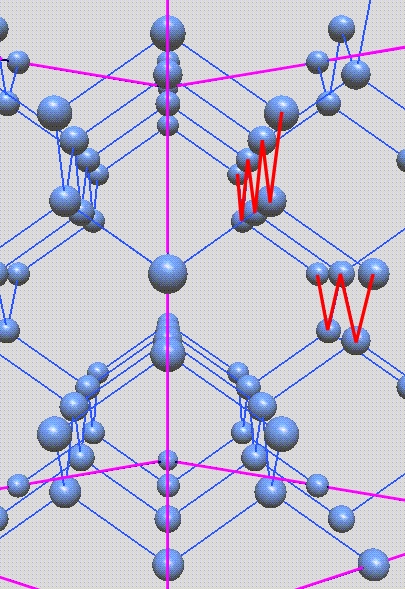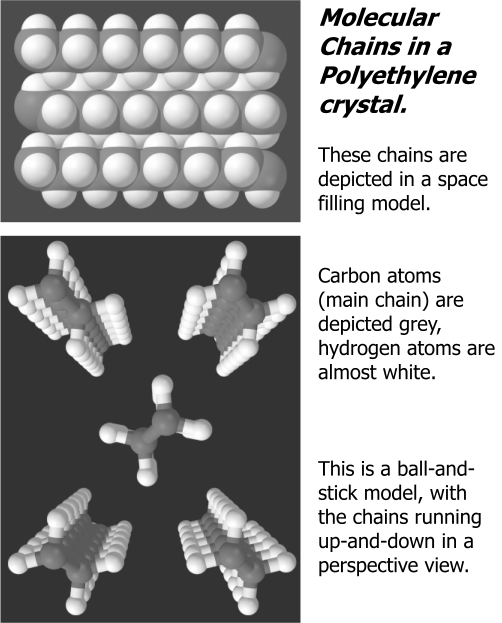Diamond is famous for two properties, firstly its wonderful transparency and secondly its hardness, which are put to good use in the diamond anvil cell.
But there is a third property that is not so widely known. Until recently, it had the highest thermal conductivity of any known material, although it has recently been overtaken by graphene.
In our lab, we have an electrospinning apparatus which employs high voltages and a temperature controlled block. For the block, we would like a material with high thermal conductivity, but apart from diamond, these are all metals which are also electrically conductive – not the ideal situation when kilovoltages are around. But diamond don’t come cheap.
Now, it seems, help may be at hand. First, let us look at diamond itself. Here below is the crystal lattice of diamond, courtesy of Nika Akopian, David Segev and Joan Adler, Computational Physics Group, Technion, Haifa, Israel.

Ignoring the purple lines, which delineate the cubic cell of the diamond crystal, we see that each carbon atom is connected to four neighbours in a tetrahedral arrangement. (For seeing how this works, look at neopentane.) I have added two red zigzag lines, which although seen in perspective are in fact running parallel to each other.
(see also an animation of a diamond lattice.)
Here is where polyethylene comes in. A polyethylene (PE) molecule has a backbone of carbon atoms in a zigzag configuration. Although in molten PE the molecule winds and twists in all directions, if the PE is crystallized or stretched the zigzags can be lined up parallel, rather like those in diamond. Since they are both made of carbon, the stretched PE chain can be thought of as a sort of one-dimensional diamond.
Here are pictures showing how the zigzag carbon chains pack together in a PE crystal.

(sources [1],[2])
One way of stretching these chains is by the gel-spinning process. For PE there are two main brands today, Dyneema® from the Netherlands and Spectra® from the USA. Dyneema is used for body armour, whereas …
Scientists said it could never be seen by the naked eye ... But the luminous tendril was clearly visible to hundreds of watchers ... in the skies above Florida ...
"This is the first man-made object in space visible as something other than a point of light" exclaimed Dr Joseph Carroll – the scientist who first proposed the space tether experiment to NASA a decade before. "I couldn’t see the space shuttle, but I could see fifteen pounds of string."
Those fifteen pounds of string had been spun from a high-density, high-strength polyethylene called Spectra into a fiber twelve miles long but just a thirty-second of an inch thick ... Spectra enjoys one of the highest strength-to-weight ratios of any material on earth.
(from Plastic: The Making of a Synthetic Century by Stephen Fenichell)
Tough stuff! So for some years, we’ve had something of the strength of diamond in PE. Now some a group at MIT led by Gang Chen have pushed things further, and prepared PE nanofibres with thermal conductivity higher than that of steel. At the end of their paper Polyethylene nanofibres with very high thermal conductivities (doi:10.1038/nnano.2010.27), they say
Our experimental results clearly show the potential of using polymers as a cheaper alternative to the conventional metallic heat transfer materials used throughout many industries. This is especially true for applications where directional heat conduction is important, such as in heat exchanger fins, cell-phone casing, plastic packaging for computer chips and so on. Furthermore, high-thermal-conductivity polymers may also have other technological advantages that can be applied, because they can be lightweight, electrically insulating and chemically stable.Did I hear Oscar the Grouch saying "Bleeeagh! You can keep those rocks for the Oscars"?





Comments